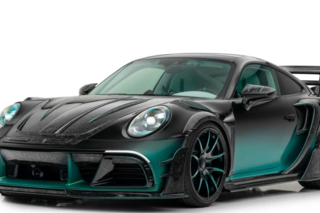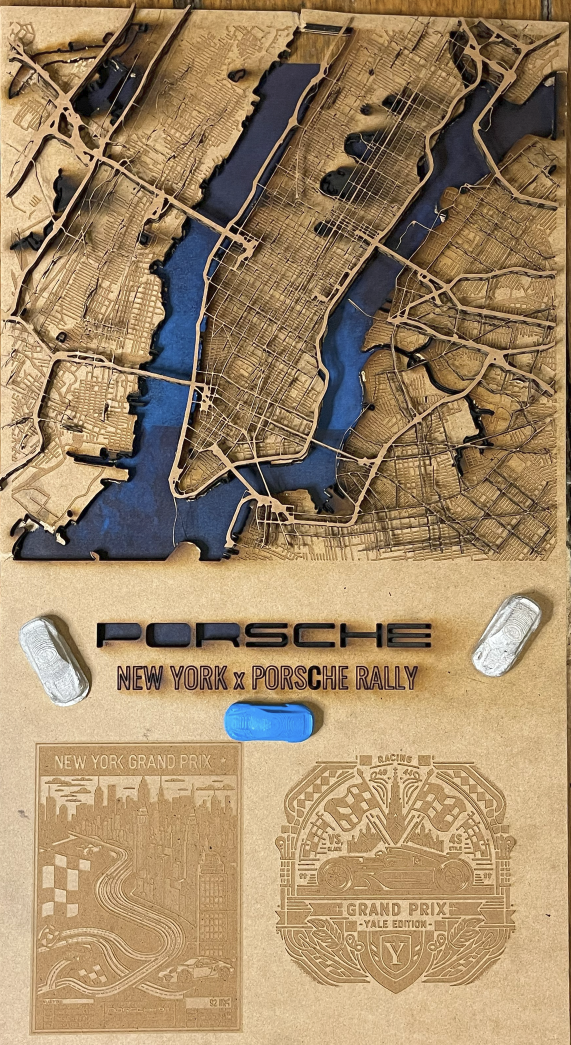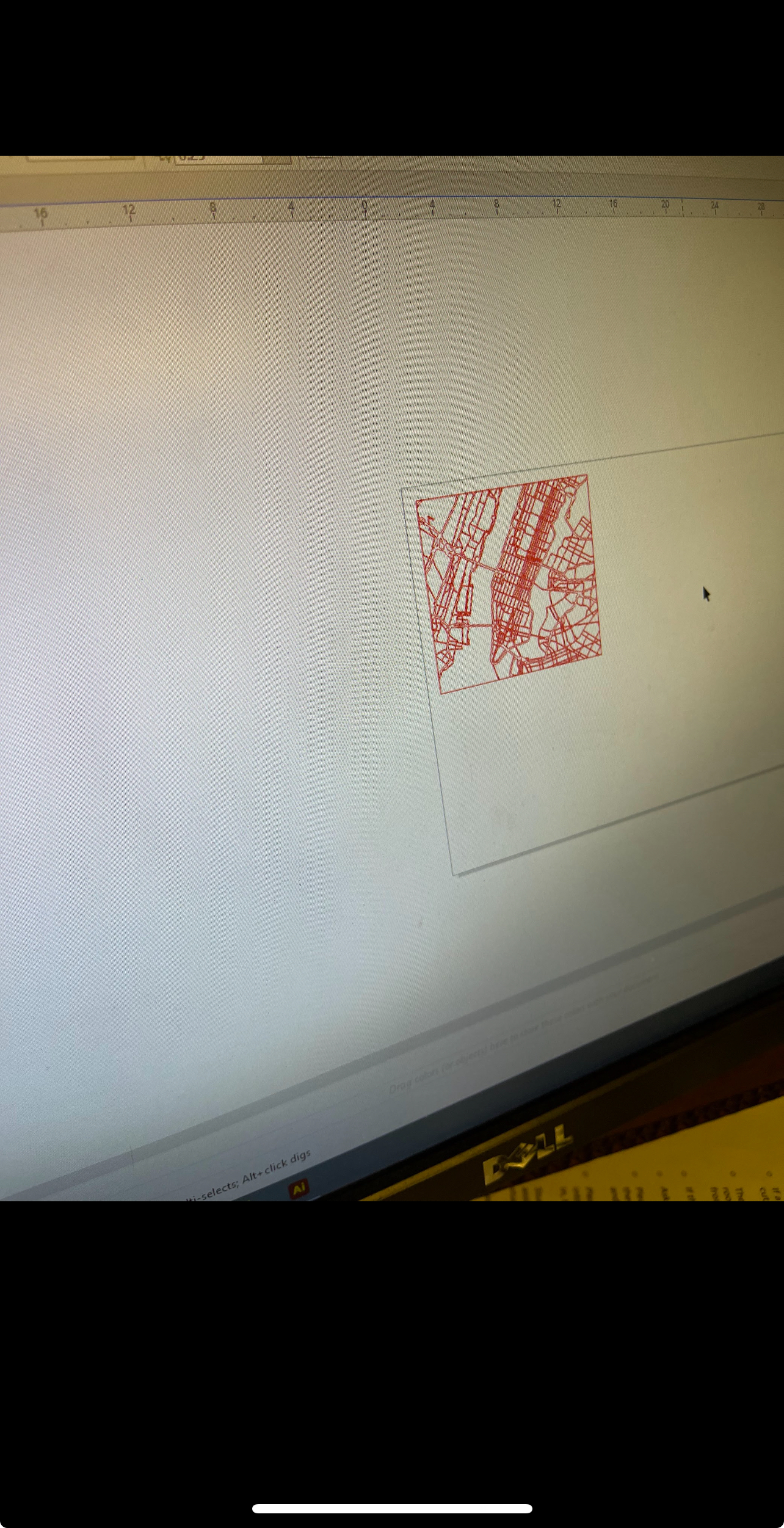Introduction
The “Cast Party” project provided a great opportunity to engage with the fundamental principles of casting and molding processes while integrating creative design with technical proficiency. This report details the comprehensive process undertaken to create a unique piece that represents the intersection of iconic design with urban complexity, themed “New York meets Porsche meets Yale: The NY PORSCHE Grand Prix.”
Concept + Design
Inspired by the timeless elegance of the Porsche 911, one of my favorite cars, the project started with the selection of this model for replication. Using Blender, a powerful 3D modeling software, I used a detailed STL file of the Porsche 911, which was then materialized using a Prusa MK4 3D printer. This model served as the master pattern for creating a mold, which was subsequently used to cast two copies in polyurethane to test the mold’s reliability, and the final piece in pewter, demonstrating the versatility and precision of the mold.
The 911 Model came from Cults3D, as the model I had made myself had some meshing flaws and I anticipated it would cause problems during the 3D printing process.
Technical Execution, Overall
- Mold Making and Casting: The creation of the mold was executed with a focus on achieving high fidelity in the final cast parts. The polyurethane casts were essential for evaluating the mold’s effectiveness, while the pewter cast provided a durable and aesthetically pleasing final product.
- Laser Cutting and Map Integration: To place the Porsche 911 in a thematic context, a three-layered map of Manhattan was designed and produced using cardboard and MDF wood. This map was laser-cut, with each layer representing different aspects of the city’s geography—waterways, main roads, and local streets. The challenge lay in aligning these layers accurately, which required precise adjustments and alignment checks to ensure cohesion across the different scales and details.
- The tutorials that were on the internet were often not addressing the issues I was facing, which is why I had to rely on some portions of the information I could find only but most importantly on my previous experience using the Laser Cutters we have here. This tutorial by EpilogLaser on Instructable was useful for certain portions of my project, although not for the actual layering process given that this author’s goal isn’t to create multi-layer maps.
Challenges + Resolutions
- Detail Preservation: Scaling down the intricate design of the Porsche 911 and the detailed map of Manhattan resulted in potential loss of detail. This issue was mitigated by adjusting the resolution of the layers and the precision settings of the laser cutter. The issue still somewhat persisted. Out of personal satisfaction, I want to cut another layer of the map again, so that the whole frame can be more sturdy.
- Layer Alignment: The alignment of the three map layers posed a significant challenge, particularly due to the varying thickness and properties of the materials used. This was addressed through testing and calibration, multiple test fittings and iterations.
- Data Extraction for Mapping: Using JSON scripts to extract specific layers from Google Maps required coding and iteration to capture the essential data without overwhelming the visual presentation of the map.
Reflections and next steps
The project not only honed my skills in 3D printing, mold making, and laser cutting but also challenged me to integrate multiple manufacturing processes into a cohesive design. The thematic representation of combining an iconic car model with a city known for its vibrant streets and dynamic life brought an added layer of complexity and satisfaction to the project.
I’m going to paint the border of the frame as well as glue some parts together.
Conclusion
The “Cast Party” was a project that expanded my understanding of both the technical aspects of mechanical design and the creative process of thematic integration. It exemplified the practical application of mechanical design principles and provided a valuable platform for showcasing and improving design and engineering skills.




